Tecate, Baja California 作者: 来源: 发布时间:2021-11-10
1. Population and Area
Pop: 72,860 (city)
Area: 3.079 km2 (city)
Elev: 540 masl
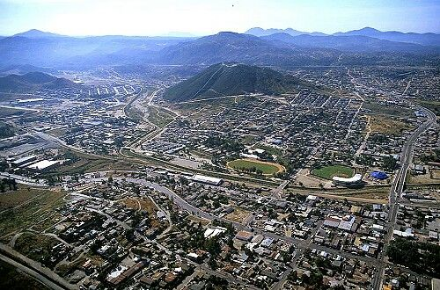
Tecate location in Mexico within the state of Baja California
https://goo.gl/maps/o4EeobNe28NLMEqp7
2. Natural geography
Nature and weather
Flora and fauna
Just as the temperature in Tecate is varied, the same happens with its plant life, where bushes such as encinillos, manzanita, pine and red chamizo prevail.
In the northwestern part of the municipality we find the ocotillo, choyas, governor, ironwood, mezcal, palm and the Tecate cypress, currently in danger of extinction.
As for its animal life, there are species typical of dry climates such as the turtle, lizard, snake and rattlesnake.
Among the birds are the species of mountain quail, California quail, chuckar partridge, collared pigeon, Huilota, white-winged pigeon, owl and pijía.
Among the mammals distributed throughout the Municipality are the black-tailed hare, audobón rabbit, bush rabbit, douglas squirrel, coyote, gray fox, weasel and striped skunk; The bighorn sheep can be found in the vicinity of the rumorosa, as well as the lynx, puma and deer.
http://www.elclima.com.mx/ubica_a_tecate.htm#:~:text=Flora%20y%20fauna&text=En%20la%20parte%20noroeste%20del,culebra%20y%20v%C3%ADbora%20de%20cascabel.
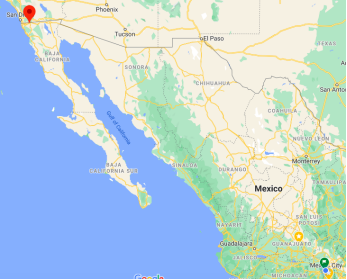
Köppen Classification: Mediterran Climate
Under the Köppen Climate Classification climate classification, "dry-summer subtropical" climates are often referred to as "Mediterranean". This climate zone has an an average temperature above 10°C (50°F) in their warmest months, and an average in the coldest between 18 to -3°C (64 to 27°F). Summers tend to be dry with less than one-third that of the wettest winter month, and with less than 30mm (1.18 in) of precipitation in a summer month. Many of the regions with Mediterranean climates have relatively mild winters and very warm summers.
The Köppen Climate Classification subtype for this climate is "Csa". (Mediterran Climate).
The average temperature for the year in Tecate is 62.6°F (17°C). The warmest month, on average, is August with an average temperature of 75.6°F (24.2°C). The coolest month on average is January, with an average temperature of 52.2°F (11.2°C).
The highest recorded temperature in Tecate is 116.6°F (47°C), which was recorded in August. The lowest recorded temperature in Tecate is 15.8°F (-9°C), which was recorded in January.
The average amount of precipitation for the year in Tecate is 14.1" (358.1 mm). The month with the most precipitation on average is January with 3.1" (78.7 mm) of precipitation. The month with the least precipitation on average is June with an average of 0.1" (2.5 mm). In terms of liquid precipitation, there are an average of 39.4 days of rain, with the most rain occurring in January with 7.1 days of rain, and the least rain occurring in June with 0.6 days of rain.
https://www.weatherbase.com/weather/weather-summary.php3?s=982030&cityname=Tecate%2C+Baja+California%2C+Mexico&units=
Getting there and around
Get there
By car
From San Diego, take Highway 94 east.
From Tijuana, Take the toll road ("cuota") that parallels Mexico Highway 2, 30 miles east. Highway 2 then leads east about 80 miles to Mexicali by way of the notorious "Rumorosa Grade". There are buses available from Tijuana. It takes roughly two hours and will eventually drop you off in the centre of Tecate.
From Ensenada take Mexico Highway 3 east. The highway is two lanes and is about a 75 minute drive to the border crossing.
Tecate's border crossing is probably the easiest in California. You can pay a few dollars to park at one of the lots on the US side and walk across the border. It can also be an alternative border crossing to get back into the US; it's less crowded than the San Ysidro and Otay Mesa border crossings (to get back into the US). It will be a long drive from Tijuana, but it will save you some time.
By bus – there is a direct bus departing from Tijuana Bus Terminal and arriving at Tecate. Services depart three times a day, and operate every day. The journey takes approximately 45 min.
https://en.wikivoyage.org/wiki/Ensenada
https://www.rome2rio.com/s/Tijuana/Tecate
Car Rental – To explore Mexico’s provincial towns and cities—including its beach locations and the scenery and attractions near them— consider renting a car for your visit. Having your own car will give you more flexibility than using public transport options and, in some cases, offer you access to places which are otherwise difficult to visit without the use of a car.
COVID19 - International entry into Mexico from United States
Allowed for: All visitors arriving by air. Mexico land borders are closed to non-essential travel
Restricted for: There are no current restrictions.
Get around
By foot – You can basically enter Tecate and get around walking from the border entrance at San Diego. You’ll have to pass a short security check sometimes.
Local Buses – Local buses and mini-buses (combis or micros) are available locally for a fraction of the cost of a taxi around town. You need to speak Spanish to be able to ask for directions or ask the driver to tell you where to get off.
Taxis – Taxis in most of Mexico’s towns and cities are not metered, so agree your price before you get in. Taxi travel is very affordable in Mexico, in comparison to the USA, Canada and Europe, and so provides a viable means of public transportation in Mexico. Your hotel can arrange taxis for you; some post their rates on a board in the lobby; taxi hotel rates are usually higher than cabs you hail off the street. If you speak Spanish, you will have a distinct advantage and be able to negotiate a price with the driver.
Uber is expanding rapidly across Mexico and now offers services in cities across the country, including: Mexico City, Toluca, Cuernavaca, Puebla, Querétaro, León, Aguascalientes, San Luis Potosí, Guadalajara, Monterrey, Hermosillo, Tijuana, Mexicali, and Mérida. Uber has been adding Mexican cities to its network every year, check for availability when you arrive at your destination in Mexico.
Cabify and Didi are also developing and currently operate in cities including Mexico City, Toluca, Monterrey, Puebla, Querétaro and Tijuana. Check for availability in the city you are visiting.
These services offer people with smartphones a way to book a cab through a mobile app for a pre-agreed price. Fares are comparable with Sitio type cabs, and sometimes trade at a premium to this when local demand increases.
https://www.mexperience.com/transport/taxi-travel-in-mexico/#51
3. ECONOMY
GDP: 12,955.38 M MXN
http://app.cemdi.org.mx/Content/Files/Publications/print_W.BOOK%20TECATE%202015.pdf
4. Industry characteristics
Tecate is a small city but is the site of the first brewery of Tecate Beer, a multinational company. The main economic activity is the beer industry and the maquiladora (manufacturing) industry, to a lesser extent agriculture, livestock, commerce and services.
The city is served by a couple of hospitals and several clinics, as well as a couple dozen doctors and dentists.
Tecate manufacturing
Though smaller than its sister manufacturing cities of Tijuana and Mexicali, Tecate Mexico Pueblo Magico (Magical Town) makes it ideal for manufacturers looking for less traffic and the hustle and bustle of a big city while still having access to services, modern infrastructure, and a dedicated border crossing. Tecate has an abundant and skilled labor pool that is said to have a less transient workforce resulting in lower turnover.
Famous for the Tecate beer brewing and bottling plant of its namesake, Tecate also serves the aerospace, electronics, medical device, ceramic and plastics industries with longtime resident giants Schlage Lock (Ingersol Rand) and Rockwell Automation calling Tecate home.
Tecate’s manufacturer mainstays show the strength of this city for successful operations while manufacturing in Mexico. Rockwell Automation employs 4,000 people at their Tecate plant and Schlage Locks employs 720. Main industrial parks include Parque Industrial Tecate (“Tecate Gateway”) and the new Parque El Bajio.
Co-Production International currently operates a branch office out of Tecate to serve the growing manufacturing industry. The Tijuana International Airport is located a mere 30 miles east of Tecate, providing easy travel for business and management teams.
https://www.co-production.net/tecate-mexico-manufacturing
Key project: Tijuana-Tecate Highway and Tecate Bypass
With less than five years in operation, the Tijuana-Tecate Highway and Tecate Bypass run 17.55 kilometres (10.91 mi) and 12.25 kilometres (7.61 mi), respectively, with a combined toll of 111 mexican pesos. The Highway 2D designation takes over from Baja California State Route 201 at the interchange with Bulevar Alberto Limón Padilla on the northeast edge of Tijuana, roughly following the course of the Tijuana River for a portion of its route. Three interchanges serve Tecate, two with Federal Highway 2 on either side of Tecate and a third with Blvd. Universidad which serves as the northern endpoint of Mexican Federal Highway 3 to Ensenada.
The concession to the operator is valid for 30 years.
https://www.proyectosmexico.gob.mx/proyecto_inversion/091-carretera-tijuana-tecate-y-libramiento-de-tecate/
5. Attractions
Tecate Beer Factory and Garden
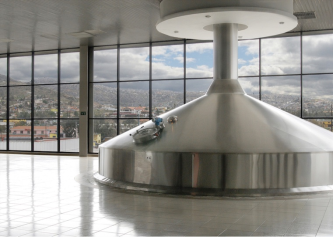
This beer factory was the origin of the modern Tecate and stands right downtown, very near the main square. Call to find out tour hours and plan your visit. You will be surprised at the sheer size of the factory and the extraordinary production. When you finish your tour, you may taste some of their beers at the Jardín Cerveza before continuing on your stroll through the most emblematic places of the Magical Town of Tecate.
This brewery, which dates from 1952 and was originally owned by Alberto Aldrete, was later sold to Cerveceria Cuauhtemoc almost in the 1960s, which belonged to the family of Don Eugenio Garza Laguera From the City of Monterrey. At the beginning of the 90's, it became Cerveceria Cuauhtemoc Moctezuma and was finally acquired by the Heineken company. The most important thing in the entire production process is that the main raw material used for the production of beer is the water from the aquifers of this beautiful town called Tecate. Hence the name of the beer known nationally and internationally with the name of Cerveza Tecate.
https://www.tripadvisor.com.mx/Attraction_Review-g499402-d1145546-Reviews-Tecate_Brewery-Tecate_Baja_California.html
https://bajanorte.com/en/a-stroll-on-the-fascinating-history-of-the-magical-town-of-tecate
Tecate-Ensenada race
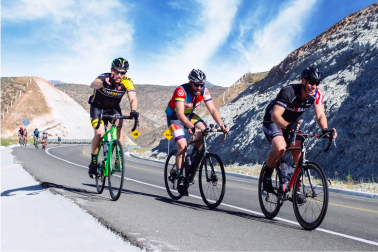
The annual Baja Bike Race is a 73 mile race and gran fondo through the Valle de Guadalupe, Mexico's wine country. You start 4 blocks from the border of the United States in the Magical town of Tecate and finish in the coastal city of Ensenada, hrough the Valle De Guadalupe, which is Mexico’s most distinguished wine region, often being referred as the “world’s hottest up and coming wine regions.”
The Tecate to Ensenada route has history taking you back to 1969 and ended in 1993. The firm tan manages the race nowadays brought back this amazing route in 2015. During your ride, you will experience just over 4000 feet of climbing with gorgeous scenery!
https://www.strava.com/clubs/288414/group_events/214843
Kumiai Museum
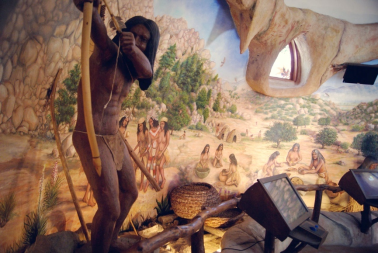
Tecate is a charming border town of northern Baja California, Mexico, less than an hour from the cities of San Diego and Tijuana. It is also at the center of the ancient territory of the Kumiai (Kumeyaay in English) people, who today live both north and south of the international border. Surprisingly, many people are unaware of the rich cultural legacy of the Kumeyaay, their role in our history, and their continued presence in the region today.
The museum project began as an idea of Kumiai community members who dreamed of a place where Kumeyaay culture could be passed on to future generations. The Kumiai Community Museum of Tecate is a place where students, teachers, tourists, and other visitors can learn about the original peoples of the region from the living descendents of our local indigenous groups. Located in the Tecate Cultural Center, this multilingual museum will offer permanent installations and exhibits, as well as educational programs and cultural revitalization activities, including:
Interactive educational exhibits on traditional culture, history, and contemporary issues of indigenous Baja California, including a world-class collection of ancient and modern indigenous arts of the region, antique and contemporary photographs, and multimedia presentations that include the local Kumeyaay people’s own stories and the sounds of the living Kumeyaay language.
Events and workshops in native culture led by local indigenous instructors, including basket-making and other arts, acorn processing, music and language.
Training programs will be carried out for members of the Kumeyaay communities in the documentation of indigenous language, oral history, and traditional lifeways.
Within the House of Culture of the city, is this palace to visit that has three parts: the history and prehistory of the Kumiai, the era of the ranches and Tecate in modernity. In its permanent exhibitions, you can find authentic regional artifacts, photographs, murals and sculptures. The building where it is located, was originally built by the federal government as a farm in 1956 and remained so until 1985.
https://www.hubbellandhubbell.com/portfolio-items/kumiai-community-museum
Tecate Sweet Bread

Every morning this place to visit spot rises with the essence of artisanal fresh bread fresh from the oven. For this reason, Tecate is known as "the capital of bread"; there is a variety of bakeries in the city, but the most recognized is "The Best Bread of Tecate", which since 1969 opens its doors always using the technique of baking in a brick vault, a method of Egyptian origin that is what makes that your product is of higher quality. Do not forget to try one of the 200 varieties of bread, but among the most requested are: the butter bar, the birotes or bolillos and the conchitas.
At the state, national and international level, it is one of the places that attract tourism to the city, offering a great variety of products, since it is located in the heart of the State, in addition to being a sign of Tecatense identity and culture.
https://www.zonaturistica.com/en/things-to-do/baja-california/tecate/bread-of-tecate
http://elmejorpandetecate.com/historia
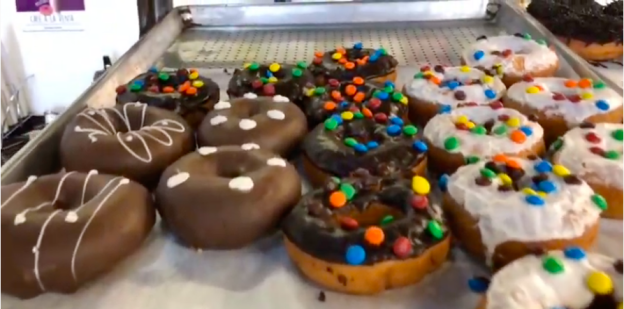
DAY TRIP TO TECATE | Visiting the Tecate Brewery, Miguel Hidalgo Park
https://youtu.be/Wa_XYrqdX4I
6. History
Tecate was founded on October 12, 1892. It is in a valley and is surrounded by several hills and mountains, the most prominent and famous of them being Kuuchamaa (also spelled Kuchamaa and Cuchama) Mountain. Kuuchamaa Mountain, also known as Tecate Peak in the United States, is a sacred mountain for the Kumeyaay people (known in Mexico as Kumiai) people, and the Kumeyaay language is still spoken in the mountains near Tecate at Juntas de Nejí. Kuuchamaa is rich in greenery, wildflowers and birds. Tecatenses as well as tourists are often seen enjoying hikes and bike rides along its many trails.
In 1829, the Mexican governor of Alta California José María de Echeandía granted the valley of Tecate as the 1,796 hectares (4,439 acres) Rancho Tecate to Juan Bandini. In 1836 the mountain dwelling Kumeyaay with some aid from some former mission neophytes, raided and plundered the rancho. They besieged the ranch house but the men within managed to hold out until it was relieved by a force from San Diego. With his stock and horses stolen and the house burned, Bandini—like owners of other ranchos near San Diego—had to abandon the isolated rancho.[8][9] Due to the continuing hostilities with the Kumeyaay, Bandini never returned, being compensated with Rancho Jurupa, in 1838.
In the late 19th century farmers and ranchers arrived in Tecate for the first time since Bandini's failed attempt to settle there. Soon after, they discovered its plentiful natural resources and decided to settle. Its abundant water and fertile soil made Tecate the perfect site for a productive farm market. Olives, grapes and grain became Tecate's staple crops. The industrial sector was developed simultaneously with the creation of coffee processing plants and breweries.
Well known for its traditional infrastructure and looks, Tecate remains true to its origins with its main plaza in the center of the city and its city hall and historic church within walking distance.
7.Contact Information

City Mayor: Olga Zulema Adams Pereyra
Contact number: +52 (665) 654 9207
Govt. Office Address: Calle Pte. Otriz Rubio y Cjon. Libertad 1310 Zona centro, C.P. 21400, Tecate, Baja California
FB: https://www.facebook.com/ArmandoAyalaRobles
Twitter: https://twitter.com/ArmandoAyalaRob
Website: http://www.ensenada.gob.mx
E-mail: zulema.adams@tecate.gob.mx
